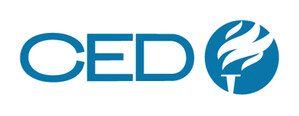Report Details How to Finance Enormous Public Debt Incurred by Pandemic
News provided by
Committee for Economic Development of The Conference Board (CED)May 18, 2021, 13:30 ET
WASHINGTON, May 18, 2021 /PRNewswire/ -- While COVID-19 has not yet been vanquished and it is too early to fully measure the outbreak's economic impacts, it is not too soon to formulate a plan to address the consequences of the massive escalation in public debt. To that end, the Committee for Economic Development of The Conference Board (CED) has issued a new report analyzing the cost of the pandemic response and laying out a common-sense approach to tackling and retiring the resulting debt and restoring the nation's fiscal health.
As detailed in Containing the Pandemic Public Debt—the latest in a series of Solutions Briefs on Sustaining Capitalism—the country's fiscal condition, which had been deteriorating for most of the century even before the economic shock of the pandemic, has taken a steep turn for the worst with the debt incurred by the response to the pandemic. The new report formulates a plan to segregate and tackle the "pandemic debt" defined as: 1) the increment to the debt arising from the loss of revenue and increases in spending that would have resulted from the pandemic (even without the federal government's policy response); and 2) the cost of that policy response.
"This 'pandemic debt,' coming as it does on top of the already-extraordinary debt that predated it, will have consequences that must be addressed if US prosperity and world leadership are to be maintained," said Lori Esposito Murray, President of CED. "Without decisive action, we risk reaching a point where interest costs crowd out public spending on infrastructure, research, and education essential for economic growth, while the federal government's borrowing would crowd out private investment as well."
In the new Solutions Brief, CED offers workable solutions for reining in and eventually eliminating the pandemic debt. They include:
- Segment the debt problem. Policy makers should segregate the pandemic-related portion of the debt and tackle it as a stand-alone problem. This makes sense for two reasons: It is a definable and doable first step in addressing the daunting overall debt, which would signal responsible intent to other nations and the financial markets. It would also acknowledge that the recovery effort was an extraordinary, one-time expense unconnected to the everyday activities of government.
CED estimates that, between the half-dozen pieces of legislation that Congress has enacted in response to the pandemic and the Congressional Budget Office's increase in projected public debt since the start of the pandemic, the pandemic debt is roughly $6.5 trillion.
- Consolidate and pay for the pandemic debt separately. With interest rates quite low and the financial markets willing to consider very long-term securities, policy makers should combine the pandemic debt into one entity and finance it with fixed-rate bonds.
While using such instruments to refinance the regular debt do not make good sense, doing so for the pandemic debt would be feasible because of its one-time nature. This portion of the debt has been incurred to address a once-in-a-lifetime contingency and would be appropriately financed over a similarly long horizon with fixed-rate bonds with a 40- or even a 50-year maturity (or even longer if the markets will accept it)—longer than the 30-year Treasury bonds that are the longest the federal government sells today.
To achieve credibility with the financial markets, once the economy is fully recovered the nation should set aside the additional funds needed to pay the interest on such an instrument. Servicing the pandemic debt is not a matter of choice but is mandatory and should be financed with a dedicated tax for the purpose of servicing the pandemic debt. The public corporation that issues the bonds to cover the cost of recovery must have sole claim to the additional revenues, thus making any change a clear violation of the nation's commitment to paying down and paying off the pandemic debt.
The report also highlights the longer-term drivers of the nation's regularly-expanding debt burden: The cost of health care to the federal government and, to a much lesser extent, the cost of Social Security. They must be addressed while also instituting greater discipline on the rest of the budget and reforming the tax code.
The new Solutions Brief, Containing the Pandemic Public Debt, can be accessed here.
Media Contact
[email protected]
About CED
The Committee for Economic Development of The Conference Board (CED) is the nonprofit, nonpartisan, business-led public policy center that delivers well-researched analysis and reasoned solutions in the nation's interest. CED Trustees are chief executive officers and key executives of leading US companies who bring their unique experience to address today's pressing policy issues. Collectively they represent 30+ industries, over a trillion dollars in revenue, and over 4 million employees. www.ced.org
About The Conference Board
The Conference Board is the member-driven think tank that delivers trusted insights for what's ahead. Founded in 1916, we are a non-partisan, not-for-profit entity holding 501 (c) (3) tax-exempt status in the United States. www.conference-board.org
SOURCE Committee for Economic Development of The Conference Board (CED)

WANT YOUR COMPANY'S NEWS FEATURED ON PRNEWSWIRE.COM?
Newsrooms &
Influencers
Digital Media
Outlets
Journalists
Opted In




Share this article